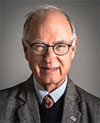Special to WorldTribune.com
 By Donald Kirk
By Donald Kirk
Forget about the U.S. pulling troops from Korea any time soon. It’s not going to happen, at least to judge by the denials from the White House and President Trump’s national security adviser, John Bolton.
“Utter nonsense,” was all Bolton had to say about a report that Trump had asked the Defense Department to study options for slashing the number of American troops in Korea from 28,500 to maybe just a few thousand.
That denial set the stage for the next two summits – first between Trump and South Korea’s President Moon Jae-In on May 22 and then, after that, presumably between Trump and Kim Jong-Un.

The problem, however, is that it’s impossible to know exactly what Trump has in mind He’s shifted so widely in his views on North Korea that it’s quite possible he may want to compromise when he meets Kim for the sake of coming together in a joint declaration that may not solve anything.
The question is whether Trump is going to turn around completely from a warhawk who once threatened to pour “fire and fury” on North Korea to a soft-liner who might expose South Korea to whatever designs North Korean strategists have in mind.
What’s in it for Trump, and why is it quite unclear where he stands and what he has in mind? The answer in part is that he would like nothing better than to return from Pyongyang with a show of triumph for the sake of earning votes for Republican candidates in elections in November for members of the U.S. Congress.
The worst fear is that the Republicans might lose their majorities in both houses in a semi-annual exercise in which all 435 members of the lower house have to run for two-year terms while 34 of the 100 members of the upper house Senate are at stake for six-year terms.
Trump needs to show that he’s capable of a statesman-like victory that would ward off some of the terrific criticism that he’s battling in Washington. Trump faces the possibility of impeachment by a Democratic-controlled congress while a special prosecutor probes ever deeper into ties between his 2016 presidential campaign and Russian operatives.
Then too, Trump has said from time to time that he believes the U.S. should not be spending as much on South Korea’s defense when the South is a prosperous country with the planet’s 11th or 12th gross national product. He believes the South can pay for most of its own defenses while building up a military establishment for which the North would be no match. South Korean military planners are not so optimistic, arguing the South needs the alliance with the U.S. and the assurance that the U.S. would come to the South’s defense in case of attack from the North, including a shock similar to the opening of the Korean War.
The Americans, notably Defense Secretary Jim Mattis and Secretary of State Mike Pompeo, have frequently said the U.S. and South Korea are bound in “ironclad alliance,” but the succession of events leading to President Moon’s summit with Kim on April 27 and the prospect of an even more portentous summit between Trump and Kim does indicate “a new era” on the Korean peninsula.
Woo Jeong-Seop, research fellow at the Sejong Institute, observed that Trump has long had “a negative opinion” about “the American presence in South Korea” and “has never ceased talking about the withdrawal of troops since his inauguration.”
Woo acknowledged deep uncertainty about Trump wants, saying “we don’t know what Trump believes. Moreover, he added, “We don’t know what the American Congress believes.” Much, he said, “will depend on geopolitical themes,” including relationships with the great powers surrounding the Korean peninsula, China, Russia and Japan.
Whatever happens, Kim is sure to try to win over Trump’s confidence with a gesture that is sure to get to the hearts of Americans. He’s expected to order the release of three U.S. citizens, Korean-Americans, who have been held as prisoners in the North for “hostile acts” and espionage, the exact nature of which remains a mystery. Trump presumably would like nothing better than to return to the U.S. with them on board Air Force one, boasting of the strides he’s taken in bringing peace to Korea regardless of whether Kim agrees to more than a vague promise to get rid of his nuclear weapons and the reactor and other facilities needed to produce them.
It’s also possible Kim may decide to free them beforehand, perhaps even this week, warming over the atmosphere while Trump is trying to decide how hard to press for denuclearization. The mere gesture of their release would charm many of those who have been saying Kim can never be trusted to go through with “complete denuclearization,” as promised in the Panmunjom Declaration that he signed with President Moon.
Kim Hak-Song, Tony Kim and Kim Dong-Chul, have reportedly already been moved from prison to more comfortable quarters in anticipation of their return to the U.S. Clearly the North Koreans want to be sure they are in decent condition after the torrent of terrible publicity that accompanied the release of Otto Warmbier the University of Virginia student who was sent back to his home in Cincinnati in a coma and died several days later as U.S.-North Korean relations veered toward the edge of war last year
